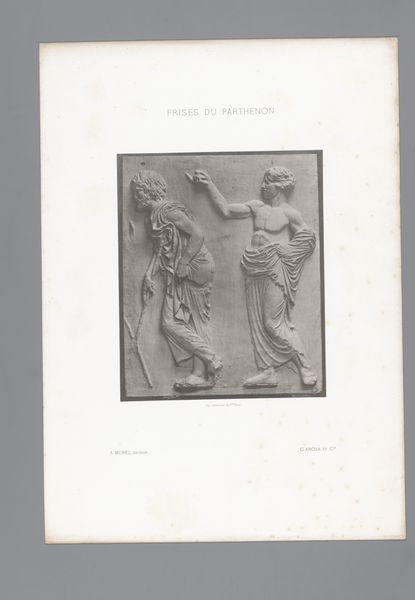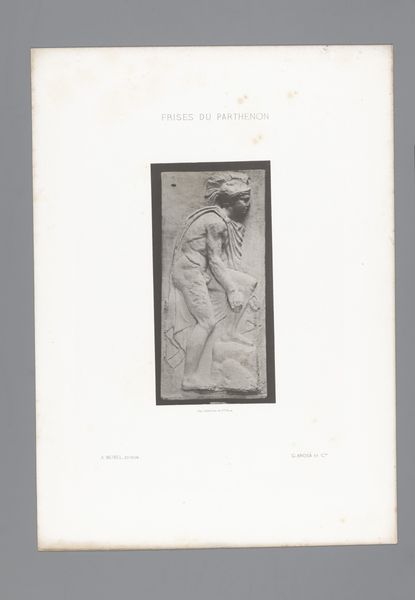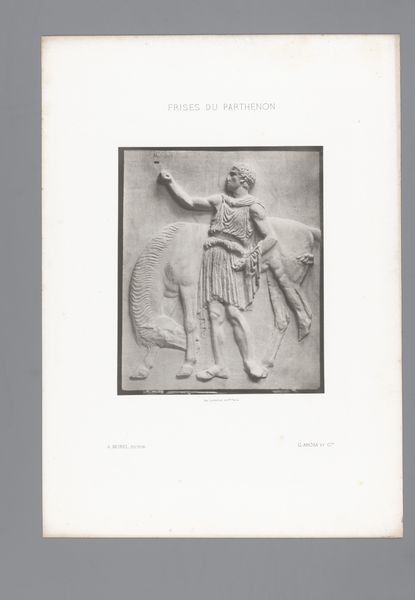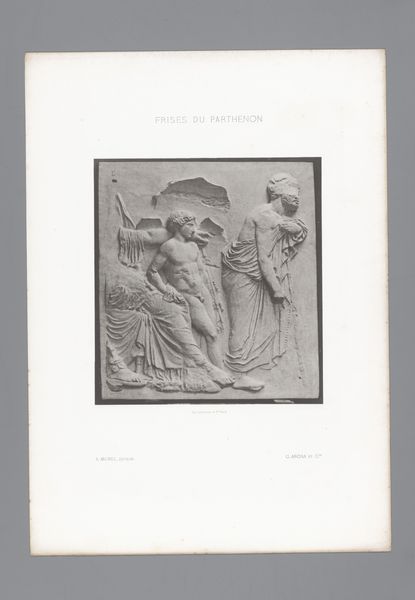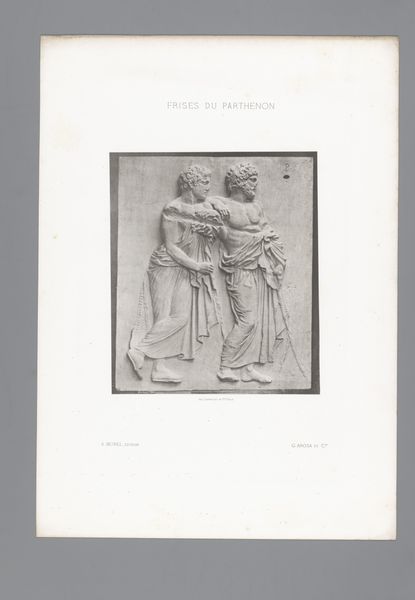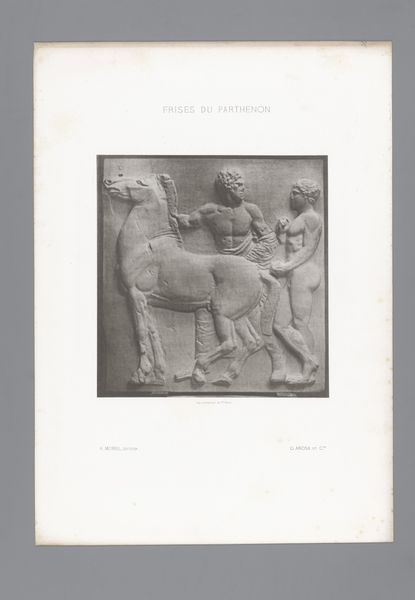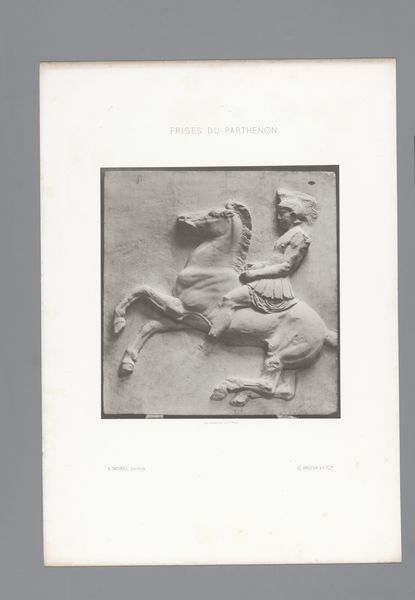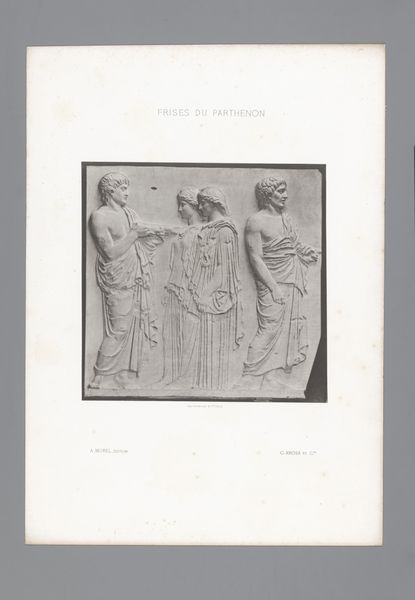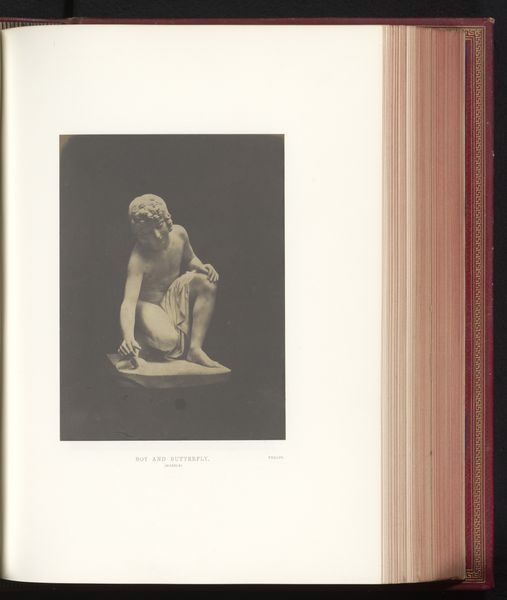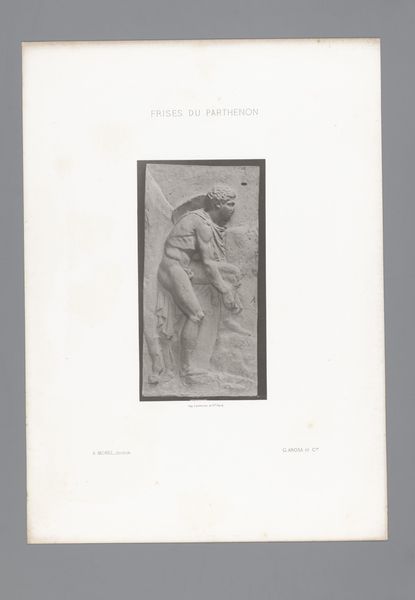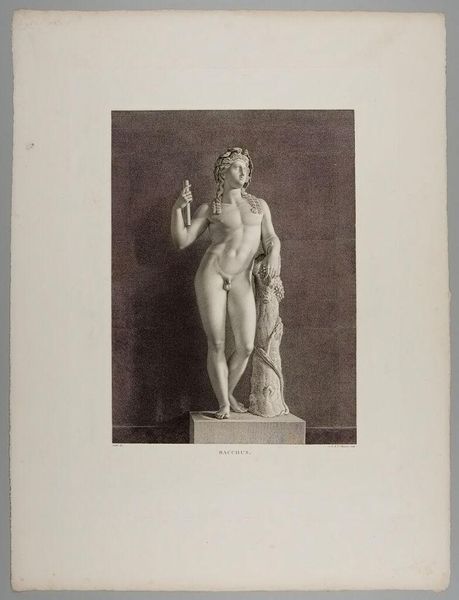
Deel van het fries van het Parthenon in Athene, afgebeeld een man en een paard before 1868
0:00
0:00
relief, sculpture, marble
#
greek-and-roman-art
#
relief
#
landscape
#
figuration
#
ancient-mediterranean
#
sculpture
#
horse
#
marble
Dimensions: height 239 mm, width 200 mm
Copyright: Rijks Museum: Open Domain
This is a photograph by G. Arosa et Cie, depicting a section of the Parthenon frieze in Athens. The original frieze, created in ancient Greece, served as a powerful symbol of Athenian identity and values. As you gaze at the image, consider how gender, class, and status are represented. The male figure, nude and athletic, embodies an ideal of masculinity central to the Athenian worldview, a privilege inaccessible to many. Horses, like those depicted, were potent symbols of wealth and power. Their presence indicates the elevated status of the riders and their families. Representations of the human body, particularly male, reflect societal norms around beauty, power, and citizenship. The work asks us to consider the narratives that are privileged, and those that are erased, within the grand narratives of history.
Comments
No comments
Be the first to comment and join the conversation on the ultimate creative platform.
